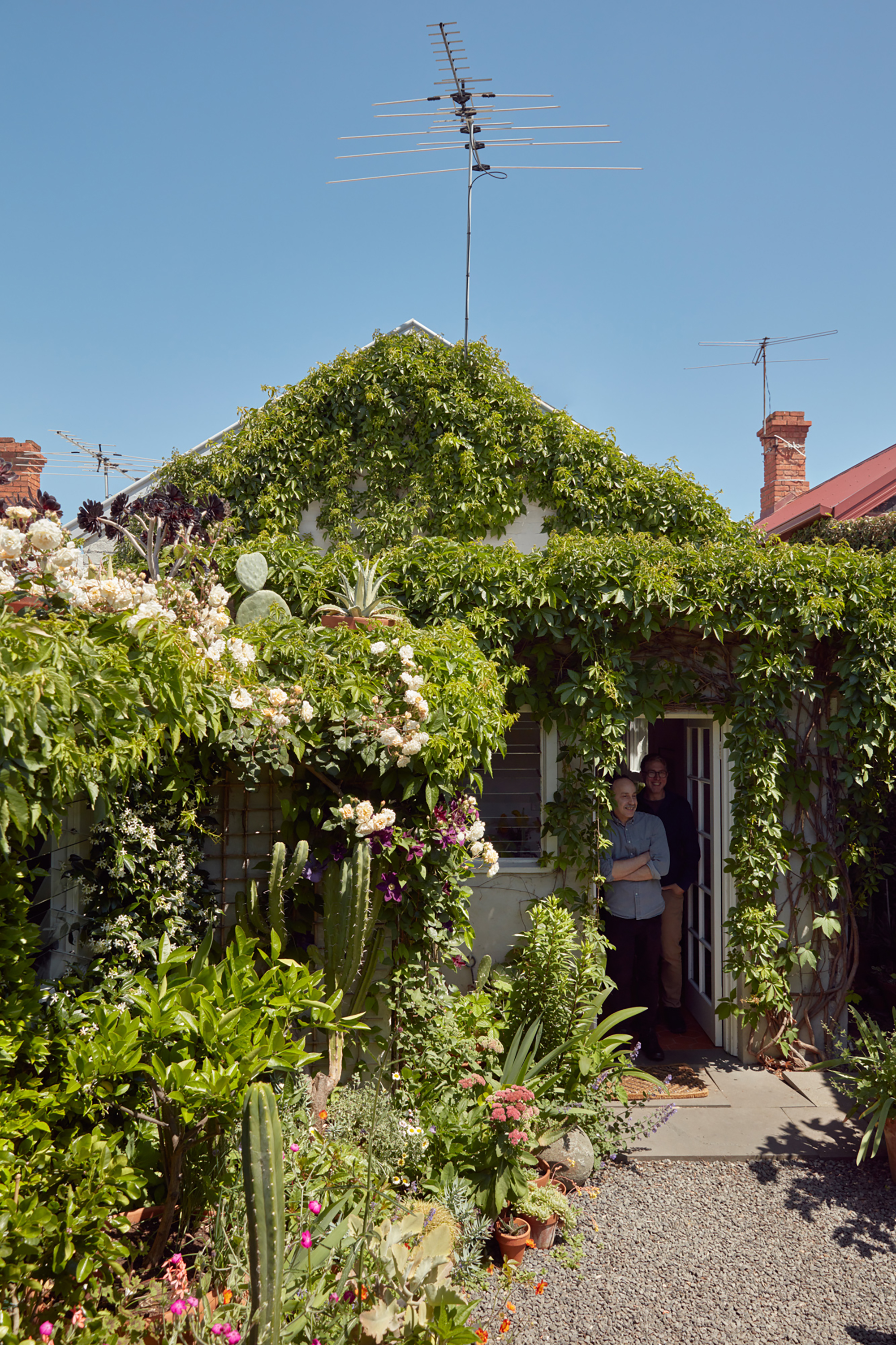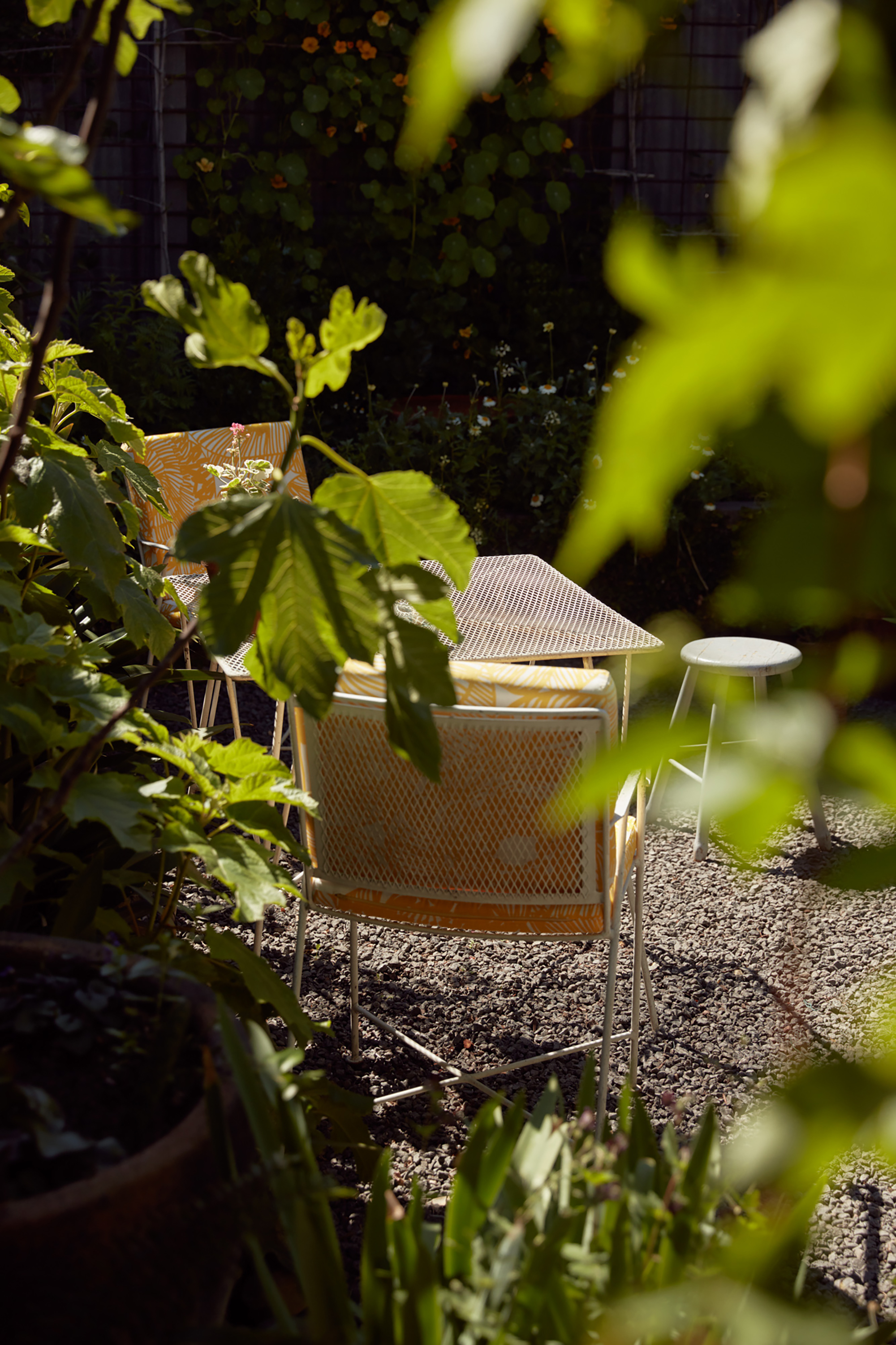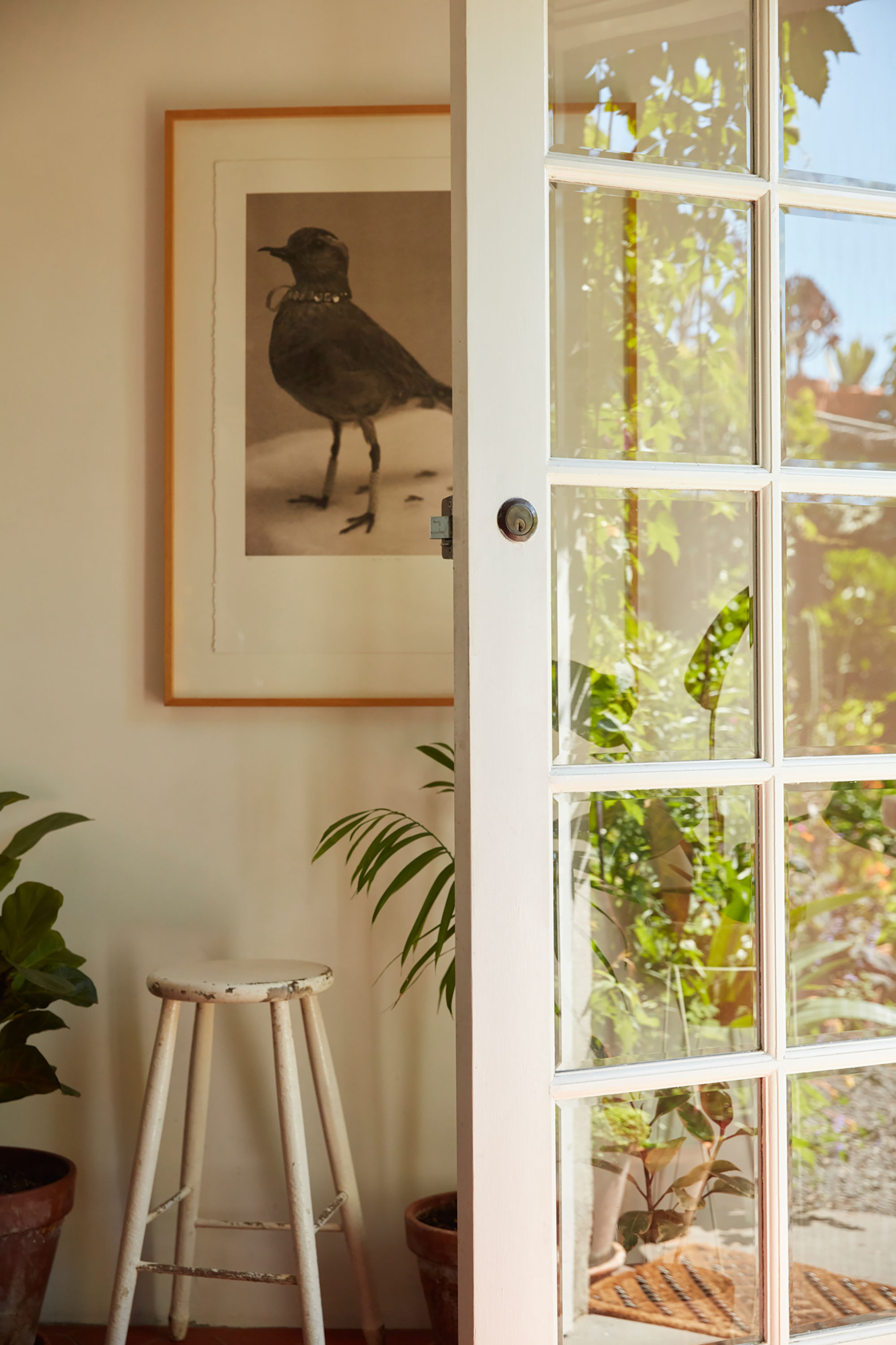Melbourne artists David Rosetzky and Sean Meilak on composing their Fitzroy home
Attention to detail and a shared passion for design has seen Melbourne artists David Rosetzky and Sean Meilak transform a rundown terrace into a home filled with light and love.
Melbourne artists David Rosetzky and Sean Meilak bought a run-down old terrace 15 years ago, which they have since transformed into a Modernist-inspired home filled with light and exquisite attention to detail.
The compositional instincts that are evident in both Rosetzky and Meilak’s work can be found in the home they’ve created, reflecting their shared love of design and simplicity.
Rosetzky and Meilak first met at Fitzroy’s Arcadia café in the early 1990s, at the beginning of both their careers. Rosetzky founded 1st Floor Artists and Writers Space in 1994, one of a number of influential artist-run spaces that took advantage of the cheap inner-city rent and council support of that decade. 1st Floor began as a six-month program of three-day exhibitions in the studio/living space Rosetzky was sharing with his brother; by 1996, it had moved to a permanent location in Victoria Street, Fitzroy. From here, Rosetzky, along with around 15 artists and writers, carved out an avant-garde approach to situating contemporary art within popular culture, and connecting art and text (short texts by artists, philosophers or cultural theorists always accompanied the artworks on show). Meilak became co-director and program coordinator in 1998, and the space ran until 2002.

An experimental approach toward art and text has long been present in Rosetzky’s own video and photographic work, which is often created through an interview process that transforms the words of his subjects into the content of the work itself. Since those early days, Rosetzky has gained an international reputation for intimate studies of individuals, groups and communities that delve into the tensions within subjectivity, behaviour and identity that define our relationships and the cultures we create. Meilak works across painting, drawing, video, sculpture and installation to draw attention to the interpersonal networks we create and physical spaces we inhabit. His delicate works address the architecture, design and psychology of both relational and built forms – real and imagined – in pieces that range from abstract formalism to intimate, illustrated portraits that reveal shared desires and vulnerabilities.
At home in Brunswick, Rosetzky and Meilak’s living environment is serenely calm; a space for deep reflection, and creativity. Rosetzky often works at home, in his studio in the front room, while Meilak takes the daily five-kilometre walk to his studio in Fitzroy. Welcoming us on a perfect spring morning, Rosetzky and Meilak lead us through to the back garden, where Lotti, their 20-year-old Siamese Oriental cat, is usually found bathing in the sunlight (she was too shy to appear for us).

David: We both had a love of gardening from our families, and [grew] up with big gardens – my father had an amazing rambling native garden. As it’s evolved, different plants have come and gone – we’re always bringing new plants in; it’s a very eclectic mix. It really is a very small space so we use every surface we can. When we first moved here, there was a concrete backyard with a Hills Hoist and no plants at all. There are quite a few gardeners in the street, so we often go into each other’s gardens and swap plants, which is really nice. But this is really Lotti’s garden – it’s her domain. She’s happy here, and is quite elderly now, so she just follows the sun and sleeps in different spots around the garden.

What I really like about the house is the relationship of the inside and outside, and how you can see reflections of the garden in the windows of the back door. Although it’s a really small house, it feels quite light and airy and, even though we don’t have huge windows, you’re very aware of the garden when you’re inside as well.
Our favourite spot tends to be sitting at the bench in the corner of the kitchen. Often I might bring a laptop over there and sit and work. Only one person can sit there at a time, because it’s such a small space. I think black wouldn’t have been a lot of people’s first choice for the kitchen cabinets, but I think it works well because it’s quite a bold design feature and it creates a sense of depth within the small space.

We both have an interest in things and the relationships between objects – it’s not dissimilar to how you might compose an image. The objects we live with are a combination of functional items and decorative objects. There are also things that have been used in artworks that come into the house, like the stool I got for a video work I made for ACCA, or that wall unit Sean designed for the office at 1st Floor, which we now use as a buffet.
There are also objects of sentimental value. The bookshelf is from my father, who was born in Romania, grew up in Germany, and studied art and design in Wuppertal. He was a graphic designer and artist, and also somewhat of a collector and had some great examples of modern and postmodern European furniture. The bookshelf is a Cassina, designed by Vico Magistretti in 1977. The shells were from my father too – he had quite a shell collection – and that [Rene] Magritte print; I have a lot of mementos from him. The little statue and the rugs are from my maternal grandparents. I feel a connection to early 20th-century European art and design because the ethos of the Bauhaus was very influential on my father, but also of the connection on my mother’s side, whose family were from Berlin.

We’re not really art collectors as such, but we have often swapped artwork with our artist friends, so we have a small, personal art collection of works by our peers, which we love. I think because we’re both artists and make compositions in our work, we are always considering the objects around us – the space they inhabit, and the potential narratives they create, that’s just how we function. It’s kind of an intrinsic way of living.
Sean: We’ve both always liked the pattern designs of Austrian designer and architect Josef Frank. We have cushions he designed in the 1940s, when he worked for Swedish designer Svenskt Tenn. The chaise lounge I found in a junk shop in North Melbourne. It’s a Thonet piece from the 1890s, and it all comes apart. I love that it’s really modern, and has this bamboo headrest that you can adjust. Thonet was at the cusp of modern furniture through their mass production, and their design, aesthetic and technique had an extraordinary influence on many modernist designers and architects. You can see their influence in Bauhaus architect Marcel Breuer’s furniture designs and Alvar Aalto’s and Charles and Ray Eames’ bentwood pieces. We look at a lot of movements from that period, including painters and architects. What I like about that period is there was such a sense of experimentation, and radical change – with artists exploring abstraction, new materials and forms. There were a lot of artists working across different fields – doing set design for theatre and film, and architects designing furniture, and this multi-disciplinary approach to artmaking is very inspiring to us.



My father is Maltese/Italian, but was born in Libya and moved to Australia when he was six. He worked in construction and project management, but had started off as a carpenter. When he retired, he wanted to work on some projects so we asked him to do the kitchen. I’ve now enlisted my father to construct the larger, architectural elements of my work.
After we did the kitchen, we used to have these birds that would just walk in from outside, through the open door. We pulled out the Louise Weaver print that we got from the Australian Print Workshop about 15 years ago. This was clearly the best spot for it.

When I was 11, we moved to a new house and my brother and I landscaped all the gardens, so I think I really got into it then. We’re always making compositions and thinking about ways of arranging and viewing the garden, creating different combinations of textures and forms. We’re always collecting plants and moving things around, so it’s an ever-changing or evolving composition. We’re addicted to collecting plants – we’ll put one wherever we can.
In the warmer months we’re always out here; we eat most of our meals in the garden. In the morning, I have tea or coffee out in the garden and look over things, picking up dead leaves or watering, just moving through the garden. It’s a sort of meditation.
This article appeared in print issue #9 of Assemble Papers, ‘Radical Family.’ Thank you to David and Sean for opening your home to us, and to Emma McRae for taking the time to craft this piece.
